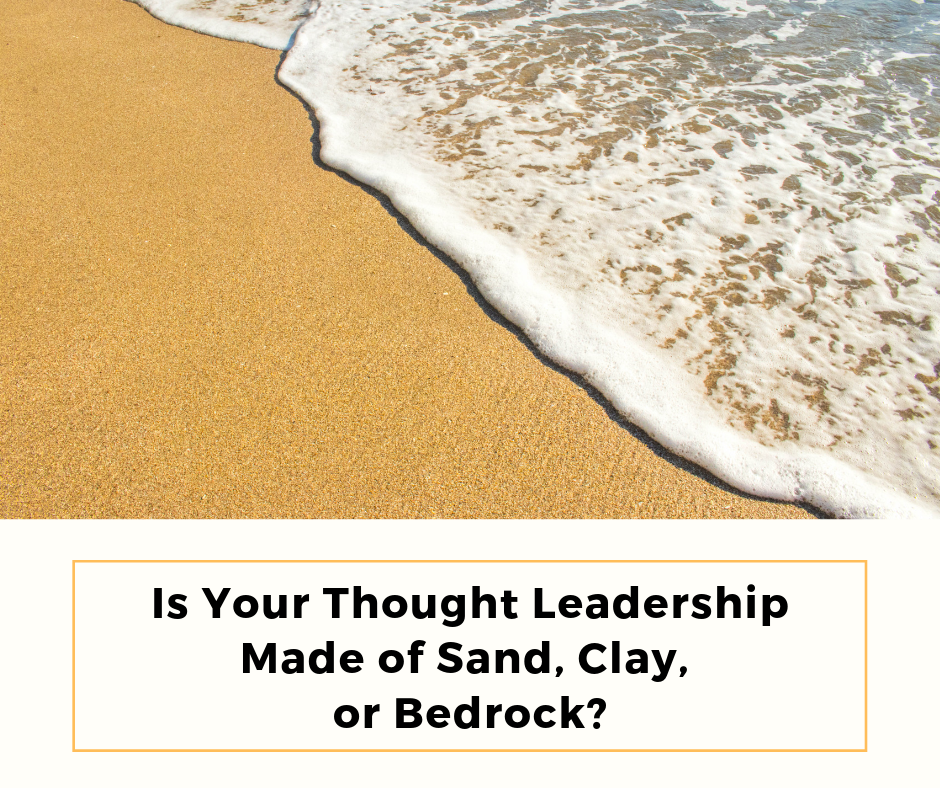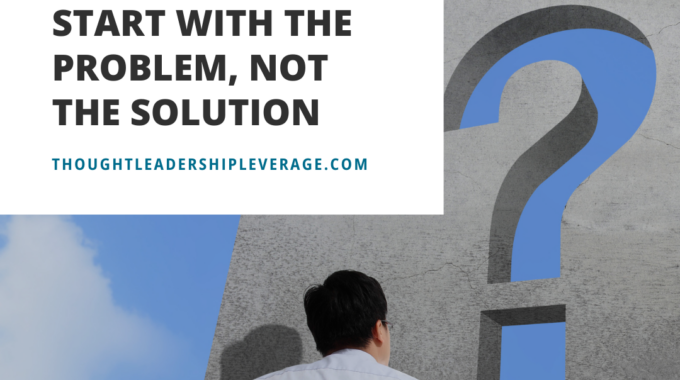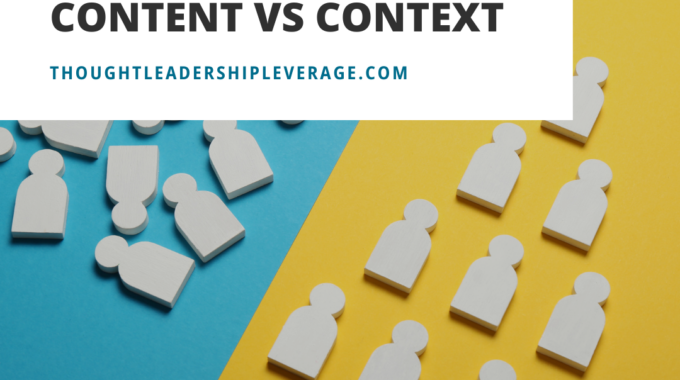Hey, thought leaders! I want to tell you about a powerful approach to thought leadership…
Is Your Thought Leadership Made of Sand, Clay, or Bedrock?
The most well-known thought leaders can communicate their content quickly, clearly, and succinctly to a buyer or learner. They know how their content can help, and where it can be applied for the most effective results. To do that, you need to understand the bedrock, clay, and sand of your thought leadership.
The first question to ask yourself is, “What are the core principles of my content?”
Your content has a bedrock. It’s comprised of the most fundamental principles and insights. It’s the essence of your material. The bedrock of your thought leadership needs to be solid, essentially immutable. You need ideas and systems that won’t change in 10 or even 20 years. These core principles are at the heart of everything that you will say, not only today but for years and years to come. That means you have to make some prudent choices, because if your language is “faddish,” it’s going to eventually sound dated. If you have a platform that’s tied to a current event, you’re going to have a problem. Such choices have a shelf life, a limited relevancy. Your bedrock should never go out of date or out of fashion. It should be evergreen.

Then, look at the ideas within your content that aren’t exactly fundamentals.
Principles you can adapt based on context. These concepts might be different when applied to a certain industry, location on the globe, or unique issue. They are more mutable, more adaptable. Think of these elements as clay. One day you may be working with executives in a CPG firm. The next day you may be giving a keynote for a professional travel and tourism organization. Your thought leadership should contain a supply of ideas that you can alter and shape as you address specific situations, audiences, or problems. These ideas and insights are your clay. They’re built on top of your bedrock, and they rely on its steadfastness to keep your message authentic, relevant, and unique.
Lastly, we go up the sedimentary scale and come to the surface of your content.
Imagine you’re standing on a white beach. Some parts of your content seem almost to wash in and out like the tide. They fluctuate as time moves on, different economic or social patterns start or end, or references become more or less topical. This is the wet sand of content. Metaphorically, the wet sand of content contains examples that you might use in a speech, or popular events that might go into a single article. They’re relevant in the moment, but they’re the opposite of evergreen.
Unfortunately, sometimes thought leaders experience a process that might be described as “fossilization.” They have a bit of content that starts as wet sand, then they push on it, pressing over and over until they shove it down into the clay, where it begins to become fossilized into bedrock. The problem comes when you realize that might have been a great story 10 years ago, but it’s not relevant today.
In building a platform, you have to seriously consider your content’s bedrock, clay, and sand.




